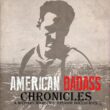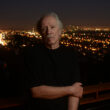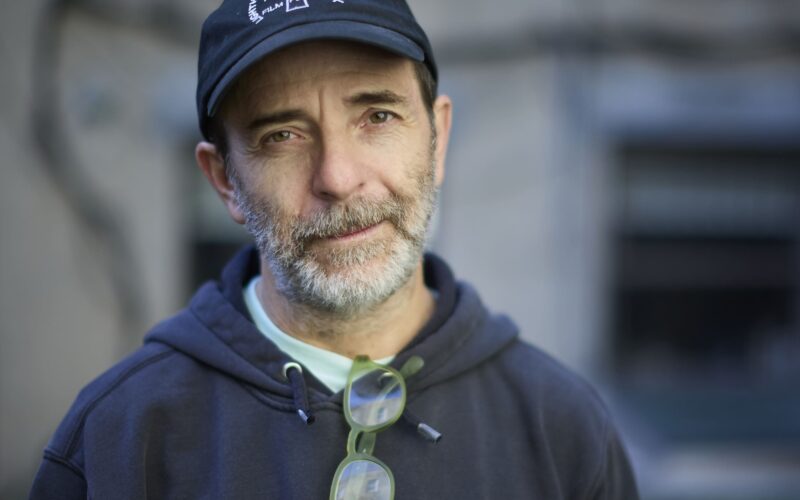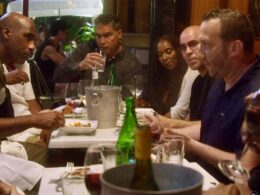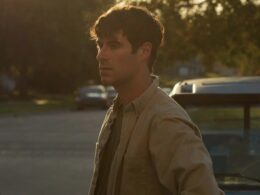A former wrestler and seasoned photographer making his directorial debut, Altschul delivers an intimate, human story that captures both the rise of women’s wrestling and the resilience of a new generation of immigrant and first-generation Americans. With empathy and cinematic grace, he explores what it means to fight — for recognition, for opportunity, and for one’s own version of the American dream.
IndieWrap sat down with Mark Andrew Altschul to talk about his creative process, his connection to the sport, and the extraordinary young women who inspired All American.
All American follows three young women over several years. What first drew you to Naomi, Jojo, and Arham, and what made you realize their stories could represent something larger than the sport itself?
It was more than just their stories, it was the stories of all the young women who were incredible athletes, and participating in the sport that was traditionally offered only to men.
I walked into a gym and saw teenage girls battling each other and knew that their stories had to be told. When I first met Naomi and Jo I was struck by how fierce and independent they were. They were wise beyond their years and were full of confidence. Their stories reflected the stories of so many other young, first generation and immigrant New York City teenagers. Their stories deserved to be told. I met Arham though coach Emma and immediately knew that she was going to be a large part of the film. Arham wanted to tell her story even if it only made a difference to one person.
You began this project after encountering the Beat the Streets program in New York. How did that initial experience shape your understanding of wrestling as more than just a sport?
I met the social worker at Beat the Streets, Justin Hoch, who told me a lot more about the kids in the program. Coach Barry was one of those kids at the time. I began to learn about how Beat the Streets was helping guide student athletes, and giving them opportunities for success through the lessons of the sport. It made me reflect back on my days as a high school wrestler. It was the first time in my adult life that I realized just how much I gained from my high school wrestling experience and how those lessons still carry me today.
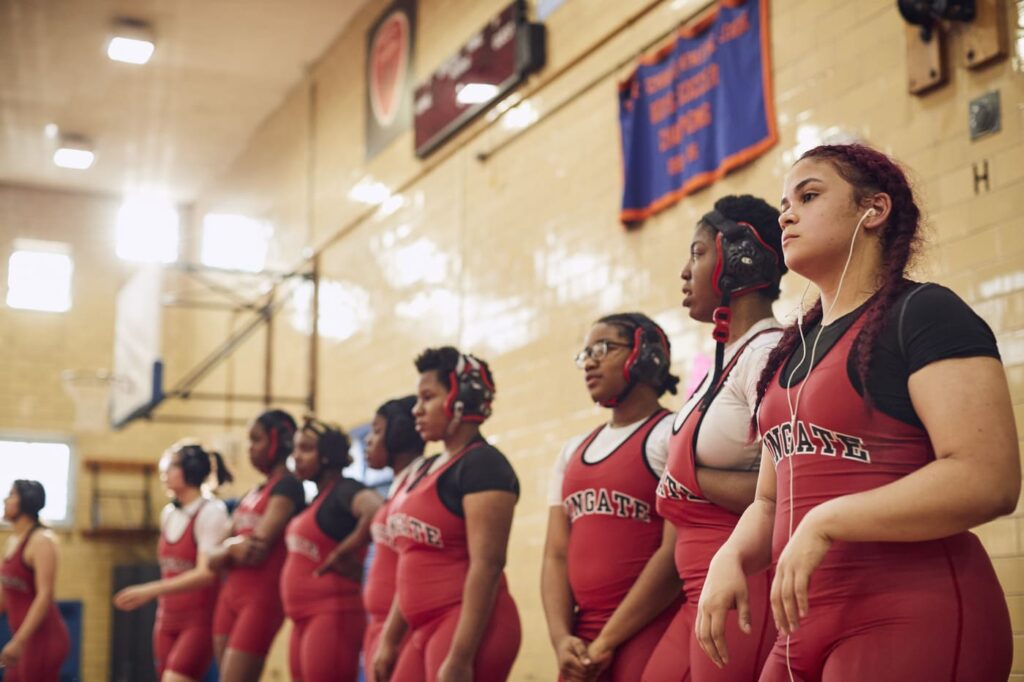
The film captures both the triumphs and the painful realities these girls face — from injuries to family conflicts and financial struggles. How did you navigate being both a filmmaker and a human being in such emotional moments?
That was the most difficult thing. I spent so much time with Naomi, Jojo and Arham and found myself wanting to be not just a Filmmaker, but a friend. Watching and observing was difficult for me. I’m an empathetic person and just wanted to help whenever possible but couldn’t. I was there to document their story, and their lives. Learning to be quiet, to listen and observe is a skill that I didn’t have when I started filming.
As a male director telling a story about young women in a traditionally male-dominated arena, what steps did you take to ensure authenticity and sensitivity in your portrayal?
I’ve worked with kids and teenagers my entire life. I believe I’m a good person, with good intentions. When I started this project, I didn’t realize that I needed help ensuring authenticity or understanding and portraying the gravity and sensitivity of my subjects in an authentic and unbiased way. Early in the editing process I connected with Trish Dalton who’s an amazing producer and Director. She loved the story and eventually became my consulting producer. Trish helped me and my editor Evan build out a team of women who were invaluable. Over the years as we continued to edit, I continued to recognize the value and need for varied additional perspectives and voices. I engaged with Muslim communities and Muslim filmmakers who were able to comment and guide specifically on Arham’s
story. Looking back, I now recognize that despite my personal empathy and open heart and mind, I was able to discover personal blind spots thanks to these amazing women who helped guide the story and make All American a better film.
The animated sequences in All American, especially those depicting Arham’s past, are striking. Can you talk about your collaboration with artist Amelie Chabannes and how you approached translating trauma and memory visually?
Amelie and I are dear friends and have been for over 20 years. We spoke at length about how we were going to do this. It was my intention not to be visually literal with any of Arham’s story. Arham’s words are independently powerful and it was important to let the viewer internalize what happened. All of Amelie’s drawings (which are incredible) are meant to be a metaphorical palate based on Arhams’s words. It was important not to show any violence or interpret Arham’s story the way that I imagined it, or how Amelie would imagine it. Amelie and I purposefully wanted to ignite the audience’s imagination. This allowed them to make their own decision on what Arham’s life looked like based on Arham’s words, using their own past experiences, not our literal visual translation.
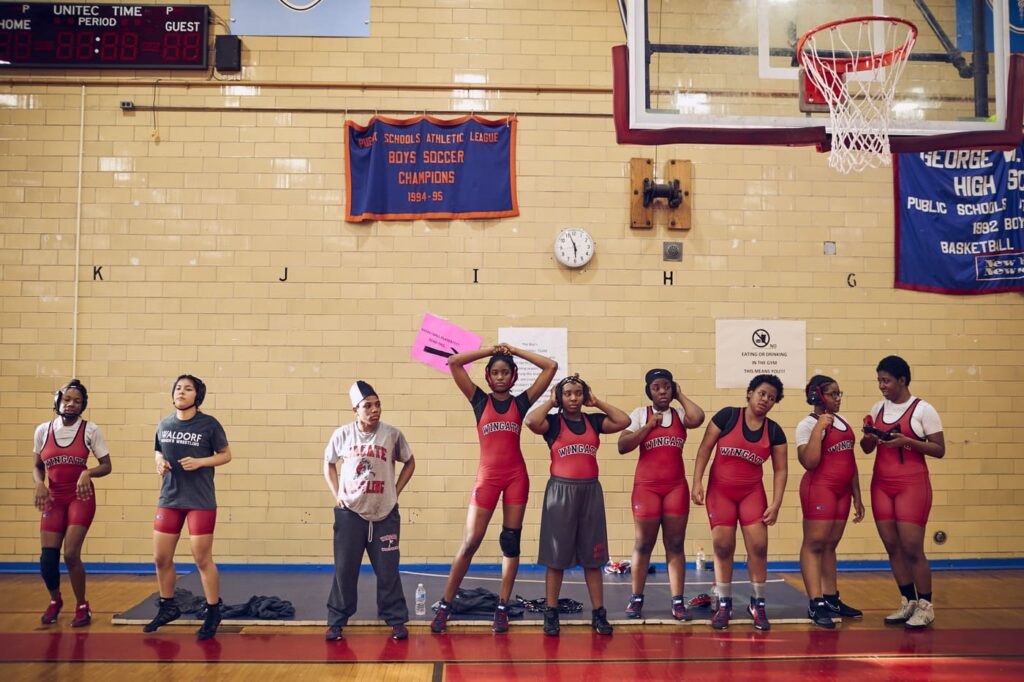
The documentary was filmed over five years, during which women’s wrestling itself evolved tremendously. How did the changes within the sport — and in the country at large — affect the direction or tone of your film?
The change was nonstop. We went through many different iterations of the story. We were always telling a coming-of-age story however, it was important to parallel the personal lives of Jojo, Arham and Naomi alongside the growth of the sport. Telling a human-interest story and mixing it with an issue-based story, is it difficult thing to do. It was important for me to embrace the facts around the sport, gender and headwinds for women’s wrestling but not get overwhelmed by facts when the film is about three young, amazing women growing up. In the end, I leaned very heavily on my team and my editor. Evan did a phenomenal job crafting an incredibly nuanced and complicated story.
Beyond wrestling, the film touches on themes of immigration, identity, and belonging. Was it always your intention to explore these broader cultural dimensions, or did they emerge naturally through the filming process?
That was one of the things that drew me in. Most of these New York City kids that I met came from all over the world and had life stories that were remarkable and heartbreaking. I was completely drawn to them, their resilience and their optimism despite all of their hardships.
New York City is very diverse and the team from Wingate High School was no exception. There were stark differences between the girls from New York City and the rest of the girls from New York State. Over the course of filming much broader themes about immigration and belonging began to emerge naturally. When Afsoon won the first medal for the US women in world competition, she stood on the podium to receive her Metal and wasn’t yet an American citizen. In the high school national championships, the young girls who place one through eight are named as All American’s, and they too are sometimes not yet American citizens. Afsoon’s experiences paralleled and continue to parallel so many other
young, immigrant stories.
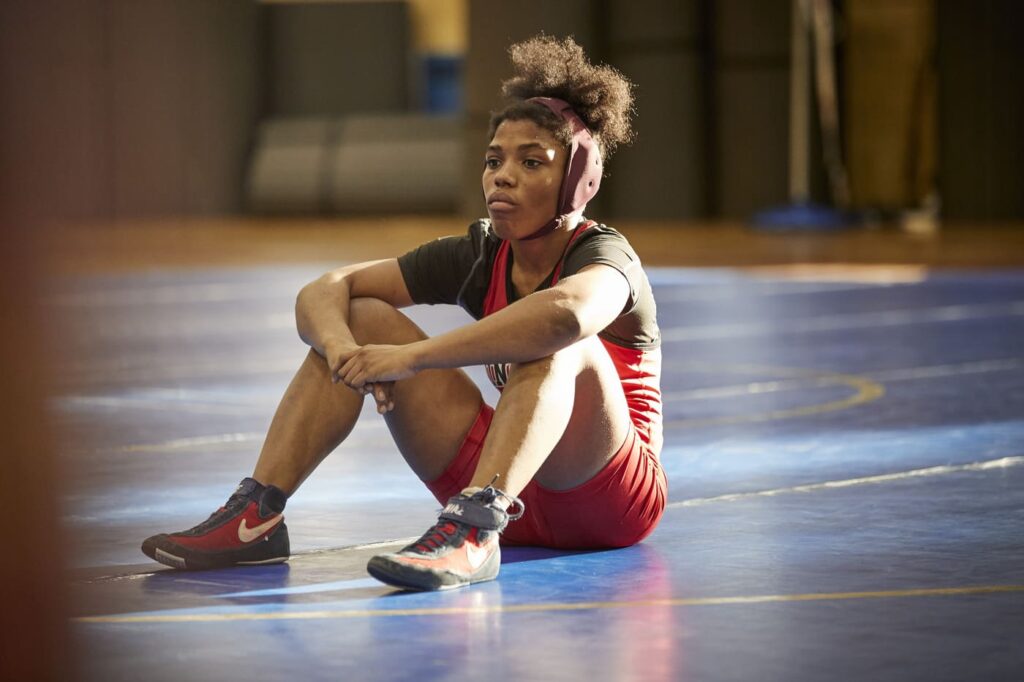
You’ve had a long career as a photographer before directing your debut feature. How did your background in still photography influence your cinematic style and approach to storytelling here?
Despite being a still photographer for my entire career, I work in a very fluid and journalistic way. I shoot a lot of pictures, never use a tripod and am constantly moving and interacting with my subjects. I often don’t rely on one photo to tell a story. I’ve had a lot of experience working with all ages and with people from all over the world and I’m able to make people comfortable in front of the camera.
The filmmaking process was very easy and natural for me. I knew I wanted to be a close and personal with my subjects. Without a doubt, the hardest thing for me was to be a silent observer. So often when I am working commercially, I am orchestrating a scene or creating a situation. In this case, I was purely observing. I had to learn to be quiet, and listen, which was honestly very difficult for me.
The girls’ stories are incredibly personal yet universal in their message of perseverance. Was there a particular moment during production that changed the way you saw your own life or work?
They’re two scenes that stick out. One was sitting in a car with Coach Acham in a parking lot at Wingate. We had just taken Jojo to the hospital. There’s not a lot of that particular footage in the film, but it was one of my favorite moments while shooting All American. It was just the two of us in the car and he was very emotional. He was physically and emotionally exhausted. He was constantly heartbroken and in tears about his athlete’s life stories and experiences but kept showing up for the girls. It was the first time I was able to be completely present and part of a conversation, but also capture the emotional gravity of the moment.
The other scene was towards the end of the film when I was driving around with Arham and visiting her old neighborhood. It was an emotional day filming. I recognized and felt as though I had finally found my voice as a documentary filmmaker.
All American also highlights mentorship and community — from coaches to social workers — as vital parts of the girls’ journeys. What did you learn about the importance of these support systems in shaping young people’s futures?
Family, found family, friendship and community support is invaluable. I witnessed how much some coaches help athletes away from the sport and how much they can impact a person’s life. I also witnessed that thanks to the collective good of people, organizations like Beat the Streets exist, and are able to make life altering opportunities happen for a multitude of people. I’ve seen firsthand the differences that these opportunities have made in these kid’s lives. Coach Barry is the perfect example. He’s a product of Beat the Streets. He had a traumatic childhood, and when I first met him, didn’t have a home or place to live. Wrestling, along with his first coach, basically saved his life. His mission is now to give back to the sport and the kids so that they too have an opportunity to thrive.
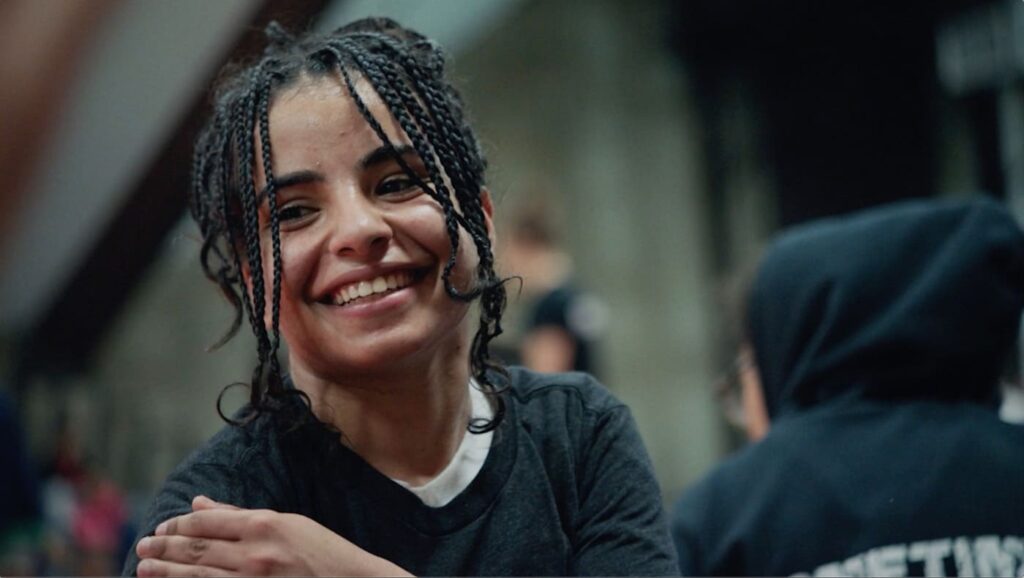
The film feels deeply hopeful, even in the face of hardship. What do yo hope audiences take away from All American about the meaning of strength, resilience, and the American dream today?
I like to believe the Film is hopeful too, but doesn’t shy away from life and disappointment. It’s a great question and I’m not sure I have the right answer for it. I know that right now the American dream seems to be muddied. I’d like to believe it still exists for everyone. Sadly, I think there’s so much division in our world today that didn’t exist when I first started filming. I think it’s impossible not to be empathetic and understanding when you know someone and have an intimate relationship with their story. I also like to believe that despite the divisions in our country currently, that we are a lot more alike than we are different. Hopefully people see this film and don’t see it as something political, but as something reflective of a part of our society and youth, and are able to find empathy in stories that they didn’t know existed.
Finally, this is your first feature-length documentary. What has All American taught you about filmmaking — and about yourself — as you look ahead to your next project?
Perseverance and patience. It is also teaching me that I can’t fix everything that is broken. Regarding filmmaking, I’ve definitely learned a ton about the process, community and ecosystem of documentary filmmaking. Despite understanding how to creatively capture footage, the business of getting a film from a camera to audiences is constantly evolving. I’ve learnt that I want to do this again and again, and want to continue to surround myself with partners and team members who challenge each other and share a common goal. It’s incredibly difficult and I think I underestimated what it actually takes to successfully get a film across the finish line. I wouldn’t hesitate doing it again. Knowing the joy that it is bringing to viewers makes it Incredibly rewarding for me personally.

